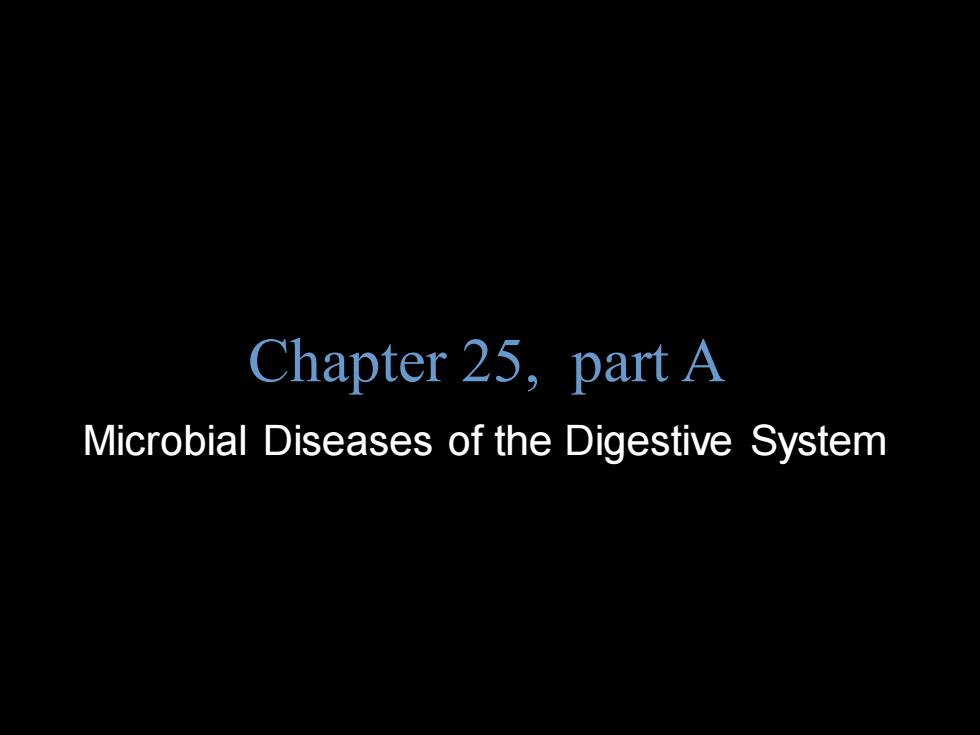
Chapter 25,part A Microbial Diseases of the Digestive System
Copyright © 2004 Pearson Education, Inc., publishing as Benjamin Cummings B.E Pruitt & Jane J. Stein Chapter 25, part A Microbial Diseases of the Digestive System
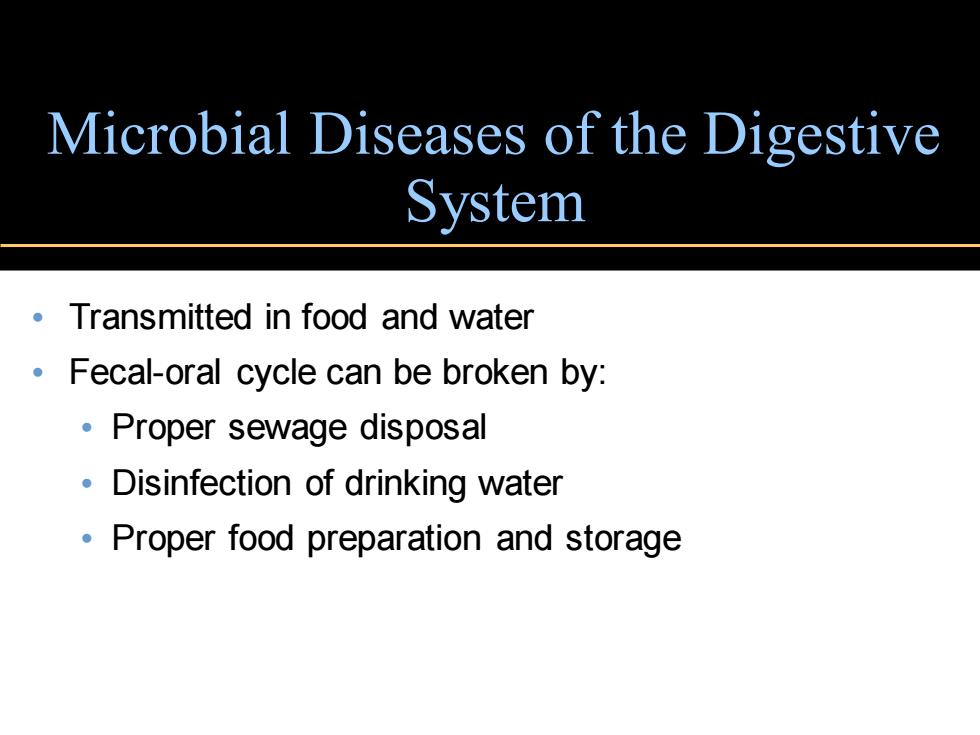
Microbial Diseases of the Digestive System Transmitted in food and water Fecal-oral cycle can be broken by: Proper sewage disposal Disinfection of drinking water Proper food preparation and storage
Microbial Diseases of the Digestive System • Transmitted in food and water • Fecal-oral cycle can be broken by: • Proper sewage disposal • Disinfection of drinking water • Proper food preparation and storage
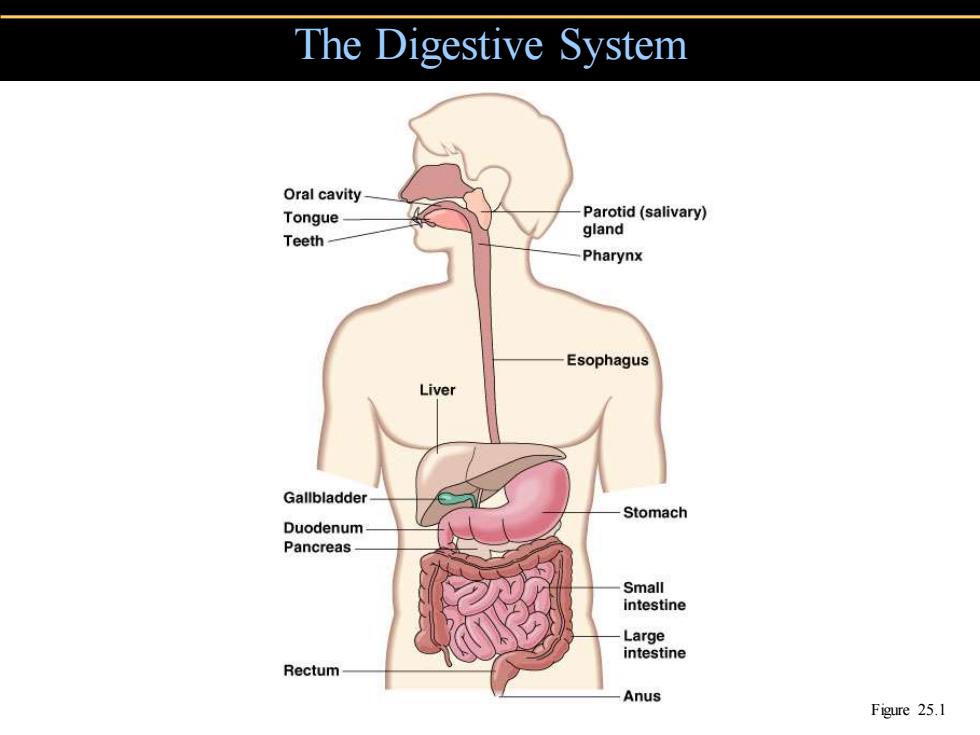
The Digestive System Oral cavity Tongue Parotid(salivary) Teeth- gland Pharynx Esophagus Liver Gallbladder Stomach Duodenum Pancreas. Small intestine Large intestine Rectum- Anus Figure 25.1
The Digestive System Figure 25.1
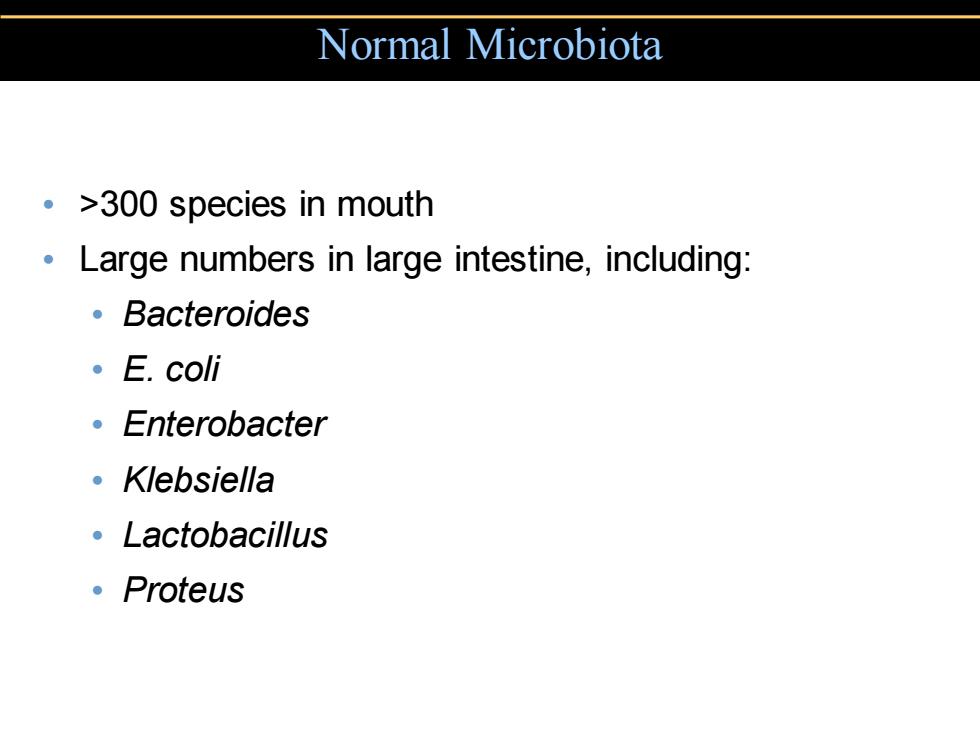
Normal Microbiota 。>300 species in mouth Large numbers in large intestine,including: Bacteroides 。E.coli ·Enterobacter 。Klebsiella ·Lactobacillus 。Proteus
• >300 species in mouth • Large numbers in large intestine, including: • Bacteroides • E. coli • Enterobacter • Klebsiella • Lactobacillus • Proteus Normal Microbiota

Dental Caries (a)S.mutans growing in glucose broth. (b)S.mutans growing in sucrose broth; 5μm SEM note the accumulations of dextran 54m Arrows point to S.mutans cells. Figure 25.3a,b
Dental Caries Figure 25.3a, b
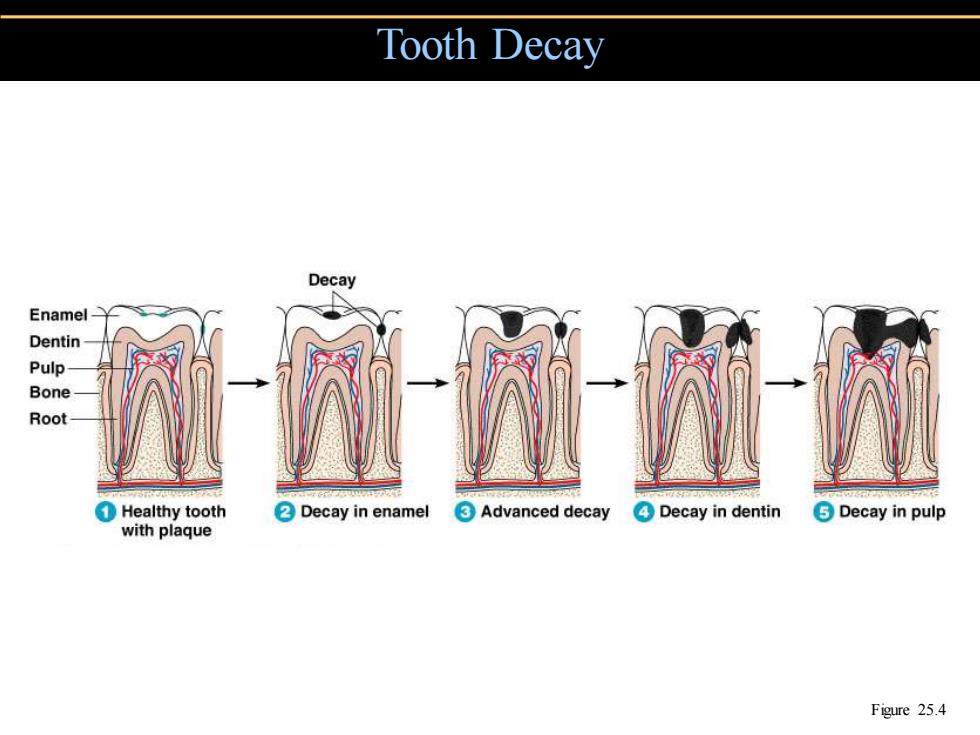
Tooth Decay Decay Enamel Dentin Pulp Bone Root 1Healthy tooth ②Decay in enamel③Advanced decay ④Decay in dentin ⑤Decay in pulp with plaque Figure 25.4
Tooth Decay Figure 25.4
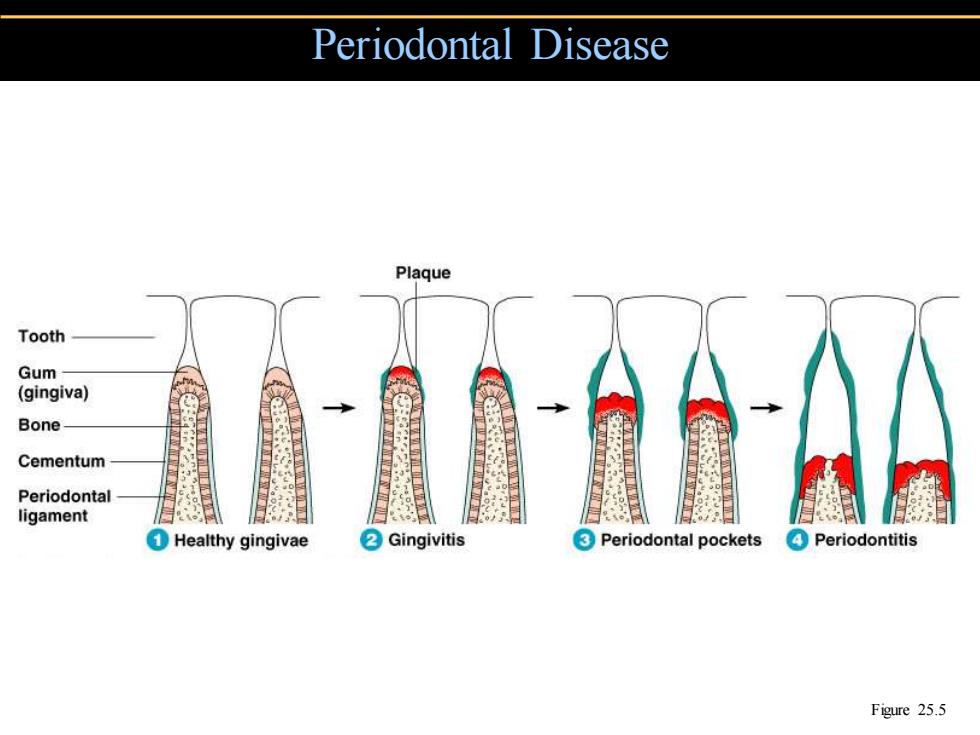
Periodontal Disease Plaque Tooth Gum- (gingiva) Bone Cementum Periodontal ligament ①Healthy gingivae Gingivitis Periodontal pockets ④Periodontitis Figure 25.5
Periodontal Disease Figure 25.5
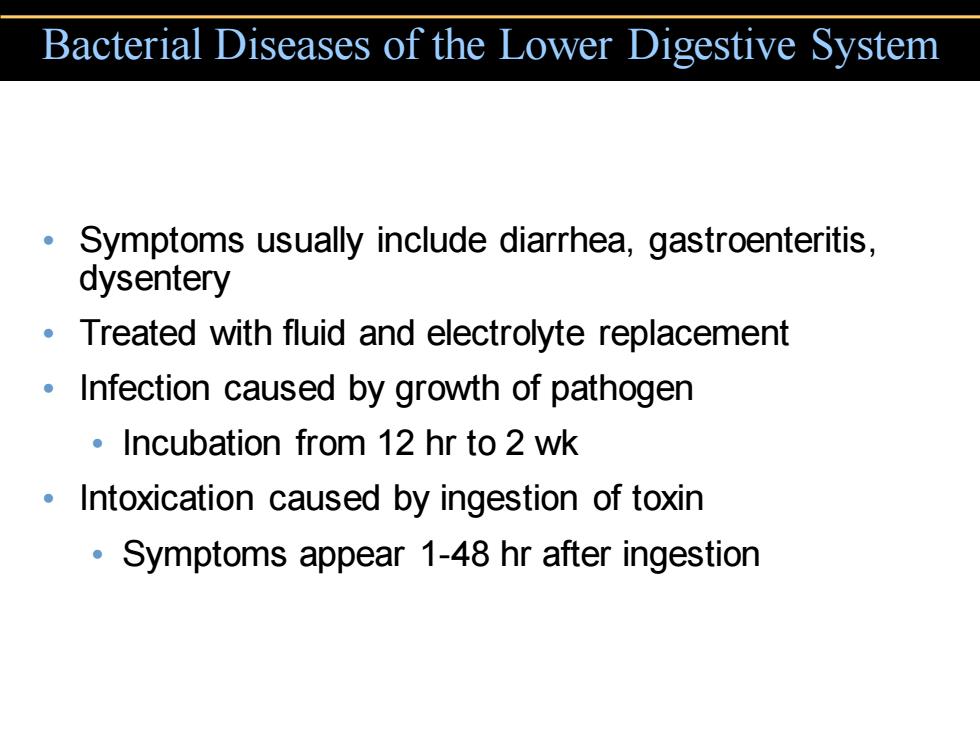
Bacterial Diseases of the Lower Digestive System Symptoms usually include diarrhea,gastroenteritis, dysentery Treated with fluid and electrolyte replacement Infection caused by growth of pathogen Incubation from 12 hr to 2 wk Intoxication caused by ingestion of toxin Symptoms appear 1-48 hr after ingestion
• Symptoms usually include diarrhea, gastroenteritis, dysentery • Treated with fluid and electrolyte replacement • Infection caused by growth of pathogen • Incubation from 12 hr to 2 wk • Intoxication caused by ingestion of toxin • Symptoms appear 1-48 hr after ingestion Bacterial Diseases of the Lower Digestive System
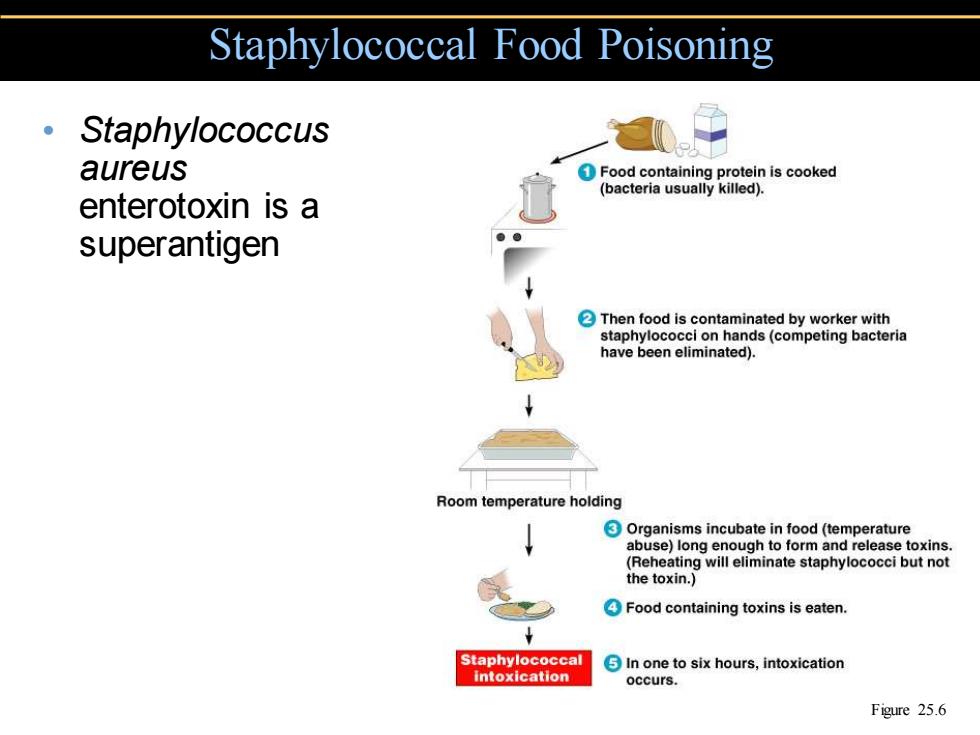
Staphylococcal Food Poisoning Staphylococcus aureus Food containing protein is cooked (bacteria usually killed). enterotoxin is a superantigen Then food is contaminated by worker with staphylococci on hands(competing bacteria have been eliminated). Room temperature holding Organisms incubate in food(temperature abuse)long enough to form and release toxins. (Reheating will eliminate staphylococci but not the toxin.) Food containing toxins is eaten. Staphylococcal In one to six hours,intoxication intoxication occurs. Figure 25.6
Staphylococcal Food Poisoning Figure 25.6 • Staphylococcus aureus enterotoxin is a superantigen
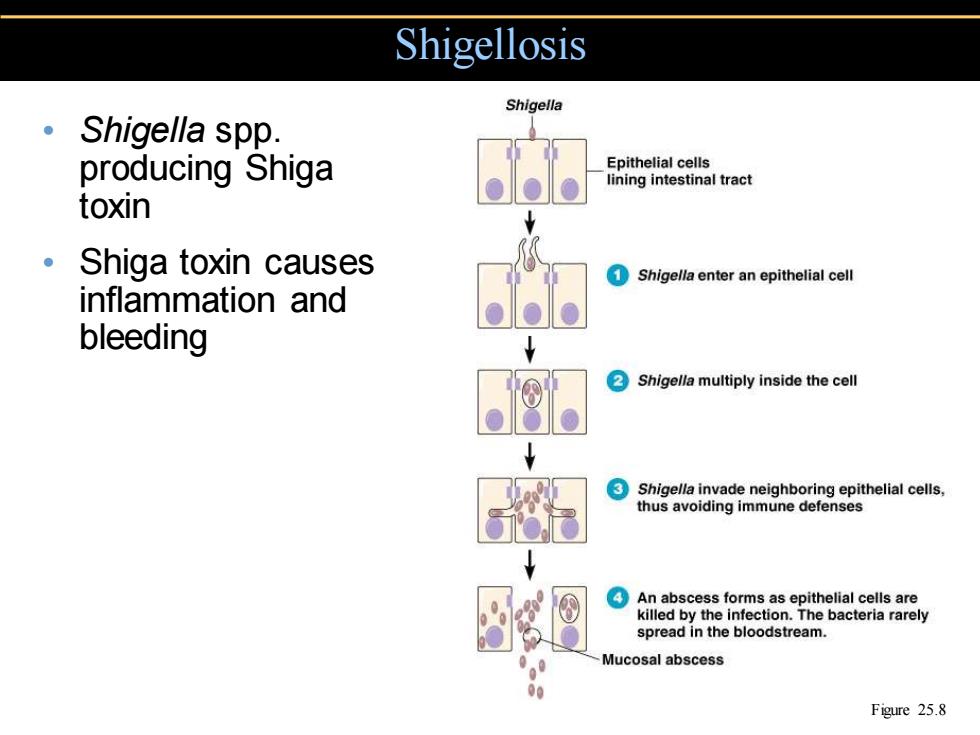
Shigellosis Shigella 。 Shigella spp. producing Shiga Epithelial cells lining intestinal tract toxin ·Shiga toxin causes Shigella enter an epithelial cell inflammation and bleeding Shigella multiply inside the cell Shigella invade neighboring epithelial cells, thus avoiding immune defenses An abscess forms as epithelial cells are killed by the infection.The bacteria rarely spread in the bloodstream. Mucosal abscess Figure 25.8
Shigellosis Figure 25.8 • Shigella spp. producing Shiga toxin • Shiga toxin causes inflammation and bleeding